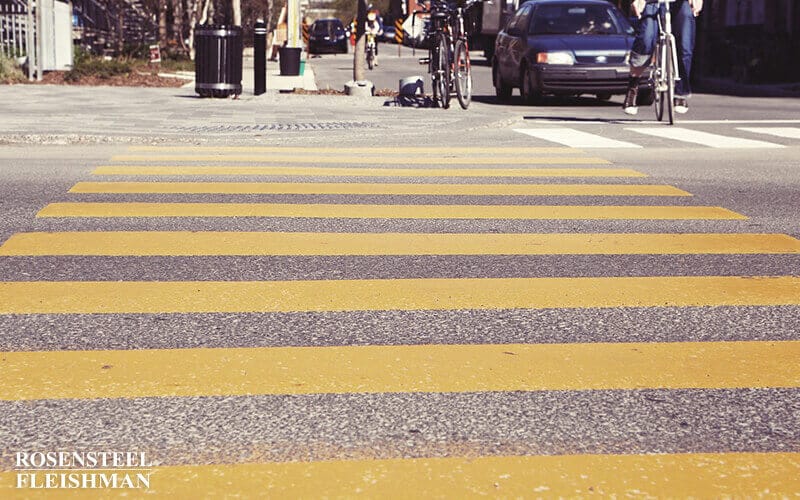After a car accident, things can get overwhelming fast. Between dealing with injuries, car repairs, and insurance phone calls, it’s easy to feel like everything is happening all at once. On top of all that, trying to understand your legal options while recovering can feel like too much to handle. Many people aren’t sure what […]

Chapel Hill Hopes to Improve Pedestrian Safety
The Charlotte Observer reports that the town of Chapel Hill is attempting to make it safer for pedestrians to cross the street in mid-block crosswalks. The town is replacing the perpetually blinking lights on five mid-block crosswalks with bigger lights that will only blink when a pedestrian pushes a button to activate them. The lights will blink for a period long enough to allow the pedestrian to cross the street. The old lights, which blinked constantly, were smaller and located only in the center of the street. The hope is that the new lights will make drivers more likely to notice pedestrians crossing the street.
The issue of pedestrian safety in that area was highlighted as recently as Thursday when a car struck a pedestrian in a crosswalk where the new lights have not yet been installed. Fortunately, the pedestrian received only minor injuries as a result of this incident. The driver was charged with failing to yield to a pedestrian in a crosswalk and failing to reduce speed to avoid a crash.
The implementation of these new lights is the most recent tactic during the past few years to improve pedestrian safety in Chapel Hill. In 2005, the town tried to provide orange flags for pedestrians to carry while crossing the street, in an effort to make pedestrians more noticeable. However, this experiment led to pedestrians engaging in risky behavior, such as crossing the street against the light.
North Carolina law gives pedestrians the right of way when crossing in crosswalks. G.S. 20-155(c) states that
The driver of any vehicle upon a highway within a business or residence district shall yield the right-of-way to a pedestrian crossing such highway within any clearly marked crosswalk, or any regular pedestrian crossing included in the prolongation of the lateral boundary lines of the adjacent sidewalk at the end of a block, except at intersections where the movement of traffic is being regulated by traffic officers or traffic direction devices.
In addtion, G.S. 20-173 states that
(a) Where traffic-control signals are not in place or in operation the driver of a vehicle shall yield the right-of-way, slowing down or stopping if need be to so yield, to a pedestrian crossing the roadway within any marked crosswalk or within any unmarked crosswalk at or near an intersection, except as otherwise provided in Part 11 of this Article.
(b) Whenever any vehicle is stopped at a marked crosswalk or at any unmarked crosswalk at an intersection to permit a pedestrian to cross the roadway, the driver of any other vehicle approaching from the rear shall not overtake and pass such stopped vehicle.
(c) The driver of a vehicle emerging from or entering an alley, building entrance, private road, or driveway shall yield the right-of-way to any pedestrian, or person riding a bicycle, approaching on any sidewalk or walkway extending across such alley, building entrance, road, or driveway.
The crosswalks at issue in Chapel Hill are mid-block crosswalks, so they are not excepted under the last clause of G.S. 20-155(c) which excludes “intersections where the movement of traffic is being regulated by traffic officers or traffic direction devices” from situations where a vehicle must yield the right-of-way to pedestrians in crosswalks. Therefore, vehicles are required to yield the right-of-way to pedestrians in these crosswalks whether the the crosswalk features the old flashing lights or the new pedestrian-triggered push-button lights.
It is interesting to consider what might occur if a pedestrian crossed at one of the new pedestrian-triggered push-button lights crosswalks but did not push the button to trigger the flashing lights. A vehicle driver might argue that, in this case, the pedestrian did not have the right-of-way. However, North Carolina statutes except only “intersections where the movement of traffic is being regulated by traffic officers or traffic direction devices” and a mid-block crosswalk is not an intersection.
Alternatively, a defendant might argue that the pedestrian’s failure to activate the flashing lights was contributory negligence. In most states, a plaintiff’s negligence will act to reduce the damages that he can recover. However, North Carolina is one of a handful of states that follows the harsher rule of contributory negligence. A plaintiff’s contributory negligence can act to completely bar a plaintiff’s recovery of damages. To avoid being contributorily negligent, a plaintiff must use reasonable care as a pedestrian.
One exception to the rule of contributory negligence is the last clear chance doctrine. In the case of an injured pedestrian, the North Carolina Supreme Court has set out four elements which must be met under the last clear chance doctrine.
Where an injured pedestrian who has been guilty of contributory negligence invokes the last clear chance or discovered peril doctrine against the driver of a motor vehicle which struck and injured him, he must establish these four elements: (1) That the pedestrian negligently placed himself in a position of peril from which he could not escape by the exercise of reasonable care; (2) that the motorist knew, or by the exercise of reasonable care could have discovered, the pedestrian's perilous position and his incapacity to escape from it before the endangered pedestrian suffered injury at his hands; (3) that the motorist had the time and means to avoid injury to the endangered pedestrian by the exercise of reasonable care after he discovered, or should have discovered, the pedestrian's perilous position and his incapacity to escape from it; and (4) that the motorist negligently failed to use the available time and means to avoid injury to the endangered pedestrian, and for that reason struck and injured him.
Therefore, under the last clear chance doctrine, a motorist cannot necessarily avoid liability for hitting a pedestrian simply because the pedestrian did not activate the flashing lights. If the motorist sees or should see the pedestrian and can avoid hitting the pedestrian, then the motorist is obligated under the last clear chance doctrine to use reasonable care to avoid hitting the pedestrian.
If you have been injured in a car accident, visit www.rflaw.net for legal help.
Additional Car Accident Articles
Being in a car accident is stressful enough, but the situation can become even more complicated if the other driver doesn’t have insurance. It’s one of those moments where confusion and frustration collide, especially when you’re stuck with damage to your vehicle or even injuries. Many people in Charlotte find themselves in this exact situation, […]
Getting into a car accident can throw everything into chaos in a matter of seconds. Whether it’s a fender-bender or something more serious, the moments afterward are often filled with questions, stress, and uncertainty. You might be wondering what your next move should be, especially if the damage is more than just physical. If you're […]
Getting into a car accident can throw everything off balance. One moment you're running errands or heading home from work, and the next you're dealing with a damaged vehicle, lingering soreness, and a pile of unanswered questions. It's easy to feel overwhelmed, especially when you're unsure what to do next or who you can turn […]
